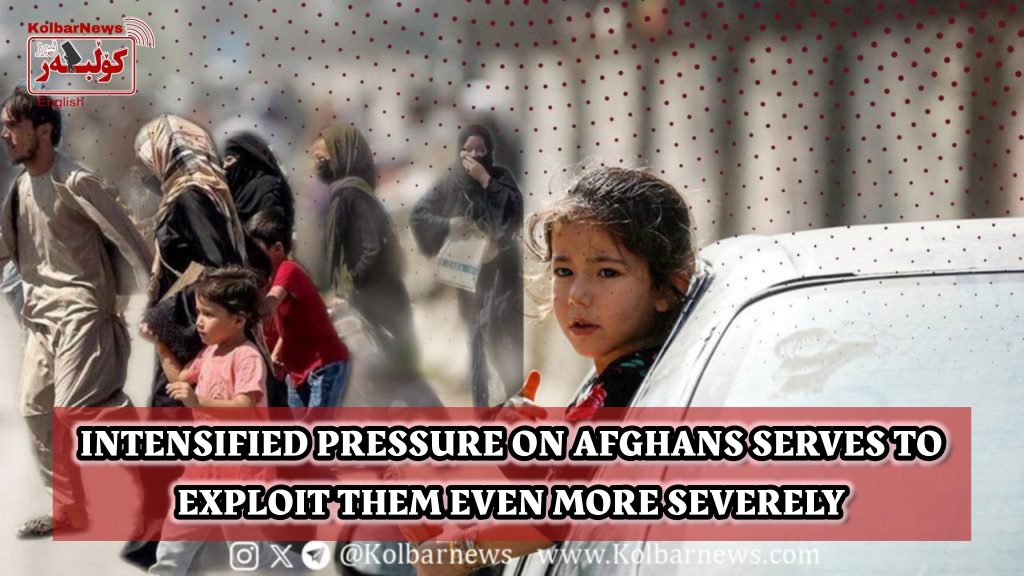
Eskandar Momeni, the Security Minister of the Interior Ministry, emphasized on Monday, August 26th, that so-called “illegal” foreigners must leave Iran by the end of this year. He stressed that addressing the issue of foreign nationals is a priority for the ministry under his authority, and he will personally oversee the deportations.
There is no accurate data on the number of Afghan migrants. Some officials mentioned a figure of 8 million last year, while current officials focus on 5 million. The government has issued residency documents to millions of them. However, the police do not recognize any of these documents and take detainees to deportation camps with violence if they cannot pay bribes, often tearing up their documents in the process.
The majority of the 5 million Afghan migrants—men, women, and children—are workers. This is an observable fact that has no place in the racist propaganda of state media. However, the same media respectfully refer to wealthy Afghans, most of whom came to Iran after the Taliban’s recapture of Afghanistan, as “investors.”
Iranian employers, especially those in the housing construction sector, prefer to use cheap and voiceless Afghan labor over Iranian workers. These Afghan workers take on the toughest jobs, from grave digging to well drilling, from hard construction work to agriculture, and from working in chemical and toxic environments to brick making and shepherding, all for the lowest wages and without any legal rights. If these workers die in highly unsafe workplaces, the unscrupulous employees of the Ministry of Labor easily blame the victims, and the employers are exonerated.
Why do government and private employers prefer Afghan workers, both adults and children? They make insulting and simplistic claims, such as “Iranian workers are lazy; they make excuses to avoid work, while Afghan workers just get the job done.” But these so-called supporters of Afghan workers are the first to arrange their deportation in case of any conflict between the employer and the worker, even if the Afghan worker without immigration papers is in the right. Numerous reports suggest that Iranian employers collaborate with the police to avoid paying Afghan workers in Iran. Employers complete projects with Afghan labor and then withhold all or part of their wages. When the Afghan workers’ patience runs out and they protest, the employer pays a bribe to the local police station to have them deported without paying their wages. The horrific extent of the exploitation by employers and officials of Afghan migrant workers would be incomplete without mentioning the exploitation of child labor and the suffering inflicted on them. These children, employed by private and public employers such as municipalities, are subjected to heavy and dangerous work in unsafe environments. They are among the most vulnerable groups in society, and if they have families, they contribute a small income to support them. Their work exposes them to irreparable harm and danger. Poverty, disease, a bleak future, addiction, illiteracy, unemployment, and cultural deprivation are just some of the hardships imposed on these working children.
The Islamic Republic uses state media, social networks, and political and social forces to pursue its goals in intensifying anti-Afghan policies. They ignore the constructive role of adult and child Afghan workers and use any minor incident to fuel hatred against them. If a crime such as rape or murder occurs, the media, without any investigation, immediately blames Afghans. More serious media outlets, with fabricated research, blame water and electricity shortages, and especially the high price of bread, on the supposedly excessive consumption of these resources by Afghan migrants. Some media outlets, while covering attacks on Afghan migrants, have exposed truths about the state of the majority of citizens. They have reported that 47 million people in Iran live below the poverty line, with nearly 25% of the population living in absolute poverty. According to Ministry of Labor statistics, 11 million Iranians receive food support baskets. They portray the presence of 5 to 8 million Afghan migrants as the reason for the impoverishment of workers and laborers in Iran.
These media outlets and government officials offer a simple solution to this very complex and largely regime- and employer-created problem, turning it into a deceptive slogan: “Deporting illegal immigrants is a national demand.”
It is an obvious fact that Afghan migrant workers are a source of construction and significant income for employers, and the military has also exploited them in wars, including the conflict in Syria, resulting in the deaths of many of them. The question arises as to why the current authorities and the new cabinet under President Raisi have intensified anti-Afghan policies and deportations. The reality is that, for the regime and employers, as in other parts of the world, this is a political matter. However, this policy has its own characteristics in the Islamic Republic. The regime is in such a desperate situation that it cannot even provide water and electricity for industries, services, and the people. This reality has led to an economy more devastated than ever. Therefore, like all right-wing regimes globally, it needs a scapegoat, and that scapegoat is the migrant worker. Moreover, Raisi’s cash-strapped cabinet has little room left for printing money and borrowing from the central bank, as increasing taxes and selling dollars in the currency market come with significant economic risks. In such circumstances, the regime tries to blackmail Western governments by threatening to send millions of Afghans to the West.

